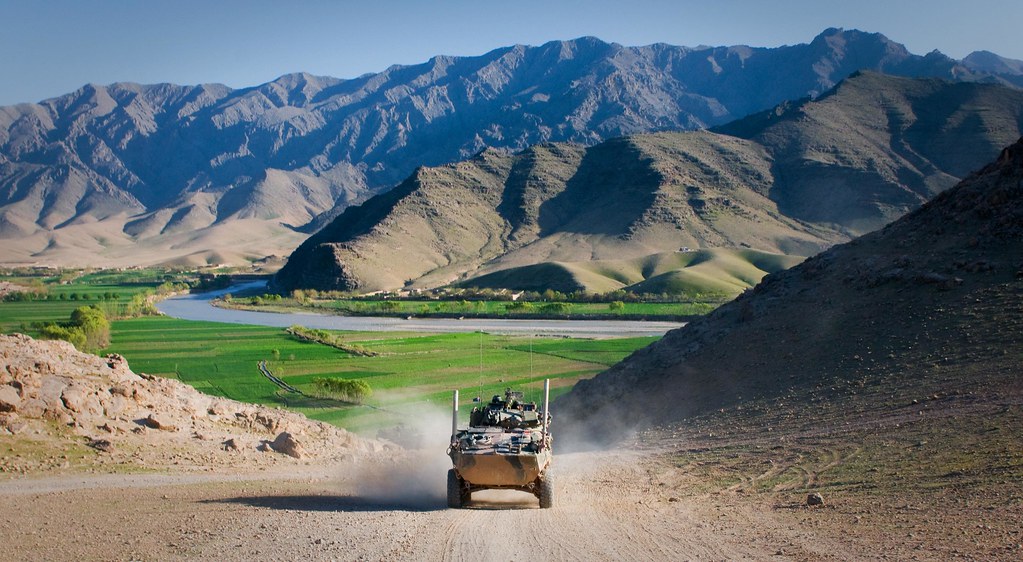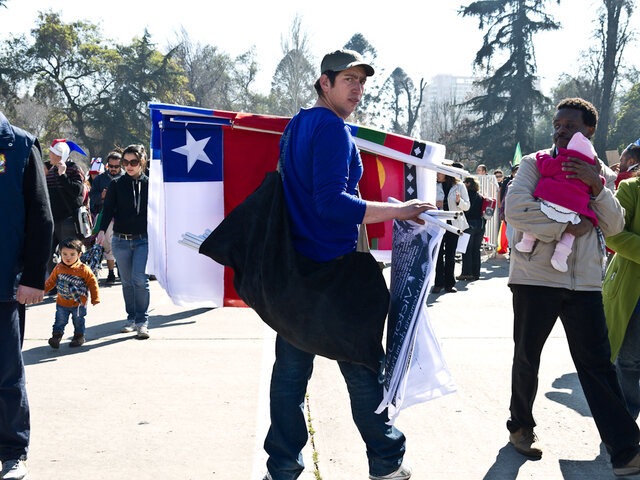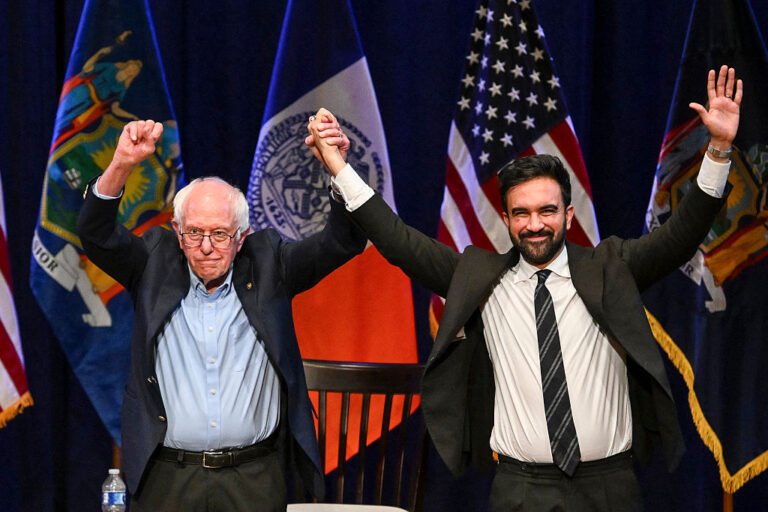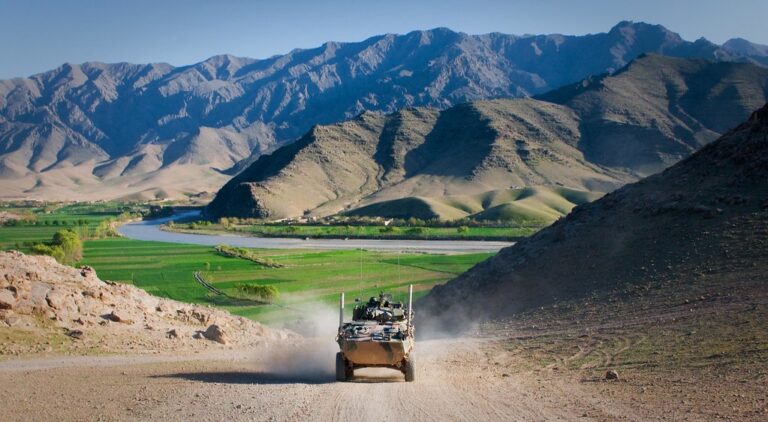
[As border clashes between Pakistan and Afghanistan erupt once more, the fault lines of South Asia’s post–9/11 order have been starkly exposed. What initially resembled a relationship of patronage — Islamabad’s enduring quest for “strategic depth” through its Taliban protégés — has devolved into overt hostility. Pakistan’s economic decline, the diminishing legitimacy of its military, and the Taliban’s newfound diplomatic assertiveness have created a precarious situation that threatens to reshape regional dynamics.
In this extensive conversation, Farooq Sulehria—writer, scholar, and long-time observer of South Asian politics—engages with Alternative Viewpoint regarding the crisis along the Afghanistan-Pakistan border, the misconceptions within Pakistan’s military establishment, and the shifting global and regional power landscape.
Sulehria outlines the historical trajectory from the CIA-sponsored “Afghan Jihad” of the 1980s to the current standoff between a weakened Pakistani state and the empowered Taliban regime in Kabul. He contends that Pakistan’s longstanding strategy of nurturing militant proxies has ultimately backfired, resulting in a “Frankenstein’s monster” that is now aligning with India and challenging its former patron.
The conversation covers a range of topics, from the domestic repercussions of Pakistan’s militarism to the evolving geopolitics of the U.S.–China rivalry, India’s growing role in Afghanistan, and the dire situation of Afghan refugees caught amid failing states. Sulehria asserts that the only viable alternative lies in fostering socialist, secular, and internationalist solidarity across South Asia — transcending militarised borders and imperial configurations. – ed.]
Alternative Viewpoint: You describe the Taliban as Pakistan’s “Frankenstein’s monster.” Could you please explain what you mean by this metaphor in today’s context—especially after the recent border clashes?
Farooq Sulehria: Since the 1980s, the Pakistani state has nurtured and supported armed fundamentalist groups. This initial collaboration involved the USA, Saudi Arabia, and others within the framework of the so-called Afghan Jihad. However, once the Soviet troops withdrew in 1988-89 and the left-wing government in Kabul fell in 1993, the policy of backing fundamentalist militias continued. The focus shifted away from Afghanistan and toward Indian-administered Jammu-Kashmir. The establishment deployed these groups against civilian governments. After 9/11, some factions became dissatisfied with Islamabad’s apparent alignment with Washington against the Taliban in Kabul. Consequently, Pakistan experienced a wave of terrorism for the next fifteen years. Simultaneously, the Afghan Taliban received safe havens in Pakistan for two decades. Pakistan has functioned as a client state, consistently reliant on US support. Such an approach has proven to be a risky strategy. Islamabad prioritized US patronage to bolster the Taliban, aiming to restore their control over Kabul and transform Afghanistan into a “strategic backyard,” devoid of Indian influence. Ironically, the Taliban, nurtured and armed at great cost to the state and society, have now aligned with Pakistan’s primary rival, India. This is where the Frankenstein’s monster analogy comes into play.
Are we witnessing a genuine breakdown between Pakistan and the Taliban regime, or just a renegotiation within a long, uneasy alliance?
FS: It’s difficult to determine whether we are witnessing a true breakdown between Pakistan and the Taliban regime or merely a renegotiation within their longstanding, uneasy alliance. Both parties lack principles, and opportunism defines the behavior of both the Taliban and the Pakistani elite. This opportunistic behavior is not unique to them; ruling elites worldwide often act in similar ways. However, I believe the current breakdown is genuine. Amir Khan Mutaqi’s trip to New Delhi represents a significant crossing of what Islamabad considers a diplomatic redline.
How do Pakistan’s current internal crises—economic collapse, IMF dependence, and political disarray—shape its new aggressiveness toward Afghanistan?
FS: In fact, aggressiveness towards Afghanistan shows newfound confidence. Since the “winning of war” against India used to legitimise the hybrid regime, Donald Trump’s nonstop pat on the back and silencing of all sorts of opposition and dissent, the ruling elite has become drunk with power. However, Islamabad continues to face challenges from militancy in Balochistan and the Pakistani Taliban, also known as Tehrik-e-Taliban Pakistan (TTP). The TTP attacks from their safe havens in Afghanistan are annoying the establishment. Perhaps there is an illusion in Islamabad that they can coerce Kabul into submission. In short, I do not see the aggression against Kabul as an expression of crisis. Quite the opposite is true.
To what extent are the recent military actions an attempt by Pakistan’s army to reassert legitimacy at home?
FS: There exists a prevalent Afghanphobia, propagated through various means of media and propaganda. This sentiment has been developing since the events of 9/11. In addition to India, Afghanistan has emerged as the new ‘other’ for Pakistan. As a result, there is either support for military actions against Afghanistan or widespread indifference among significant segments of society.
In an earlier article, you had mentioned that “running with the hare and hunting with the hound” has been Pakistan’s state policy for decades. Why has this duplicity persisted across regimes — both civilian and military?
FS: In the realm of international politics involving India, Afghanistan, and major powers such as China and the USA, military influence predominates. The so-called civilian leaders have very little authority in these matters.
You note that the Taliban have adopted patriotic rather than religious rhetoric in their recent clashes with Pakistan. Does this mark a shift in their ideological project, or is it purely tactical?
FS: It is akin to the situation in Iran, where the Ayatollahs blended their interpretation of fundamentalism with a form of nationalism during the war against Iraq. The Taliban remain steadfast in their fundamentalist ideology; without it, they would cease to be the Taliban. Nonetheless, they strategically incorporate elements of jingoistic-nationalistic rhetoric.
How do ordinary Afghans perceive Pakistan today, and does this popular sentiment limit Islamabad’s leverage over Kabul?
FS: Long before the current stand-off, Pakistan had already lost any sympathy among the Afghan population. Many Afghans hold them accountable, largely justifiably, for the numerous miseries they have endured.
What role does internal factionalism within the Taliban — particularly the Haqqani vs. Kandahar groups — play in this escalating tension?
FS: There are numerous rumours circulating, yet no concrete information is available. It is difficult to make definitive statements. However, those who are monitoring the situation in Afghanistan, including Afghan citizens and the diaspora, continue to emphasise internal differences, as do various commentators in the media.
You hint at the US–China rivalry shaping the regional situation. How plausible is the idea that Washington sanctioned Pakistan’s attacks on Afghan territory, possibly to reclaim influence through Bagram or challenge China?
FS: Once again, the matter is largely speculation, and no documented evidence supports these claims. Donald Trump’s comments provide context regarding the attack on Kabul, as he stated that the USA aimed to regain control of Bagram Airbase in Afghanistan to encircle China. However, it is crucial to note that Pakistan cannot afford to irritate China either.
On the other hand, Pakistan’s economy is deeply dependent on Beijing. How is the Pakistani ruling class managing this contradiction between U.S. appeasement and Chinese dependency?
FS: They have been managing this relationship since the 1960s. The issue is not merely how they will appease both Beijing and Washington; rather, it is that Islamabad has two patrons, and this dual patronage poses a threat to democracy in Pakistan. Notably, the two patrons often have overlapping interests that Pakistan attempts to satisfy simultaneously.
Does this triangular tension (Pakistan–US–China) suggest a broader crisis in the “post-war on terror” regional order?
FS: Yes, it is a complicating factor. However, this triangular relationship is merely one aspect of the broader situation. India is another significant element. Anwar ul Haq, a former caretaker prime minister, once candidly remarked, ‘Pakistan is China’s Israel.’ Such a Freudian slip is rather unusual in Pakistan. Nevertheless, an India-China rapprochement may be crucial for keeping the USA at bay in this region. Currently, especially with the BJP’s ideological grip on India, such a rapprochement seems increasingly like a mirage.
Afghanistan’s foreign minister’s visit to New Delhi, as you note, embarrassed Islamabad. How should we read this growing India–Afghanistan proximity?
FS: I believe that any government in Kabul will strive to maintain strong relations with New Delhi. The Taliban regime may seek to reconcile with Islamabad in the near future; however, they are unlikely to sacrifice their newly formed friendship with India. They may be ruthless, but they are not foolish. They will refrain from placing all their trust in Pakistan.
Is New Delhi seeking to fill the vacuum left by the U.S. withdrawal—or is it more about projecting regional hegemony under the Modi government’s nationalist agenda?
FS: I am not well-placed to analyse this issue for an Indian audience. Nevertheless, I do not believe that India can effectively fill the gap left by the United States.
How do you view Indian media and policy narratives around Pakistan’s “instability”? Do they serve a strategic function domestically, beyond foreign policy?
FS: In the past, Indian media, particularly during the dominance of print, commanded significant respect in Pakistan and beyond. However, in the present, Indian media, except for a few alternative outlets, often lacks credibility. I also follow a few bloggers, such as Shekhar Gupta from The Print and Praveen Swami, to gauge what the Indian establishment is thinking. Ravish Kumar is a notable exception, though he tends to focus on domestic politics. Overall, even on platforms like YouTube, there is a noticeable lack of quality journalism, particularly regarding Pakistan.
Pakistan’s deportation of nearly a million Afghan refugees has shocked many observers. What does this reveal about the militarised and xenophobic direction of Pakistan’s state?
FS: In addition to reflecting xenophobia, it also highlights opportunism. During the 1980s, media outlets celebrated Afghan refugees, portraying them as ‘Muslim brothers’ resisting ‘infidel Soviets’. The narrative framed the Afghan Jihad as, in reality, a Pakistan Jihad aimed at thwarting Soviet aspirations to access the warm waters of the Arabian Sea. I believe their expulsion was also manipulated as a means to exert pressure on the Taliban. However, it is worth noting that the Taliban treat Afghans in a manner reminiscent of how Pakistan treated Afghan refugees. This situation should also be viewed as part of a broader global trend in the era of Trumpism. When so-called liberal democracies violate refugee and human rights, they normalise poor practices. Iran, too, has expelled Afghan refugees with comparable brutality. Ironically, both Pakistan and Iran profess to champion the rights of the Ummah.
How is this militarism affecting the working class, both in Pakistan and Afghanistan? Is there any visible resistance, solidarity, or dissent emerging from below?
FS: In Afghanistan, perhaps nobody wants any more trouble. They are already enduring a life-threatening situation. Likewise, the civil society has been utterly destroyed. In Pakistan, the left and certain progressive nationalists in Balochistan and Khyber Pakhtunkhwa (formerly NWFP) have opposed this escalation. But they are marginalised.
You end a recent article by saying, “Frankensteins cannot live in peace when terror-monsters rule the roost.” Is there any political force—inside or outside these states—capable of breaking this vicious cycle?
FS: Presently, the situation is very pessimistic. However, the source of hope always struggles. We in the Af-Pak region have no other option but to organise ourselves against all these forces of darkness on both sides of the border. We need international solidarity on the level of South Asia, in particular.
What would a progressive, anti-imperialist regional framework look like today—one that can counter both Taliban reaction and militarist nationalism in Pakistan and India?
FS: I think it has to be unapologetically socialist, secular, internationalist, and anti-imperial. It is important to highlight that sections of the left in India-Pakistan have huge illusions about China. The left needs to understand that China represents a new form of imperialism. Furthermore, the so-called multipolarity is being projected as an opportunity. It is an opportunity for the ruling classes, not the working classes.
Unfortunately, a section of the left in Pakistan is even giving up on secularism, let alone internationalism and an anti-imperialism anchored in Marxist principles rather than campism. As Marxists, what we privilege over everything else is the interest of the working class.
Finally, what can the Indian left learn from Pakistan’s experience with “strategic depth” and its disastrous consequences?
FS: I think the primary lesson is: do not support imperial-style elite adventures outside of the country. The working classes and subaltern sections bear the consequences.



